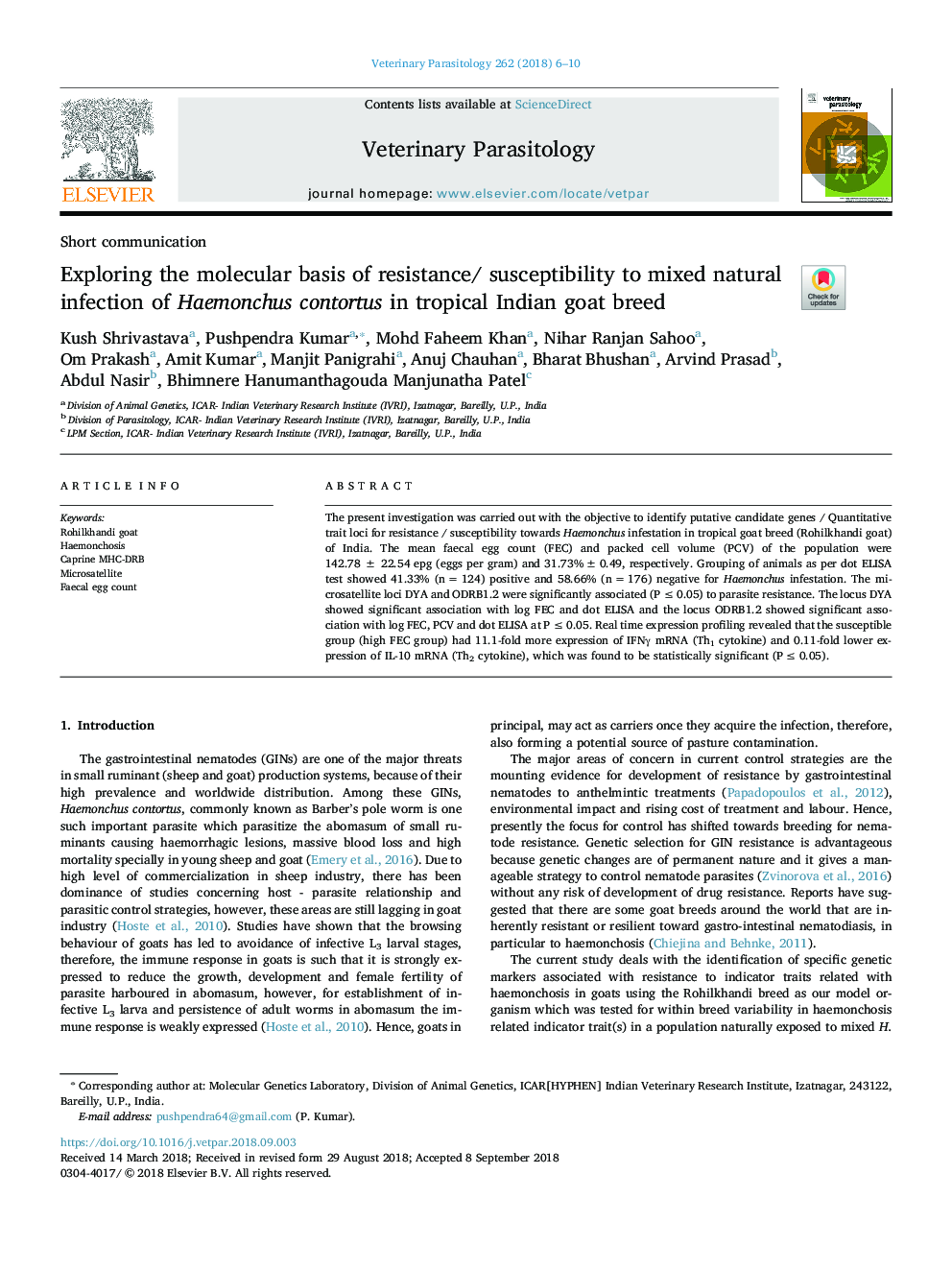| Article ID | Journal | Published Year | Pages | File Type |
|---|---|---|---|---|
| 10158162 | Veterinary Parasitology | 2018 | 5 Pages |
Abstract
The present investigation was carried out with the objective to identify putative candidate genes / Quantitative trait loci for resistance / susceptibility towards Haemonchus infestation in tropical goat breed (Rohilkhandi goat) of India. The mean faecal egg count (FEC) and packed cell volume (PCV) of the population were 142.78â±â22.54 epg (eggs per gram) and 31.73% ± 0.49, respectively. Grouping of animals as per dot ELISA test showed 41.33% (nâ=â124) positive and 58.66% (nâ=â176) negative for Haemonchus infestation. The microsatellite loci DYA and ODRB1.2 were significantly associated (Pââ¤â0.05) to parasite resistance. The locus DYA showed significant association with log FEC and dot ELISA and the locus ODRB1.2 showed significant association with log FEC, PCV and dot ELISA at Pââ¤â0.05. Real time expression profiling revealed that the susceptible group (high FEC group) had 11.1-fold more expression of IFNγ mRNA (Th1 cytokine) and 0.11-fold lower expression of IL-10 mRNA (Th2 cytokine), which was found to be statistically significant (Pââ¤â0.05).
Related Topics
Life Sciences
Agricultural and Biological Sciences
Animal Science and Zoology
Authors
Kush Shrivastava, Pushpendra Kumar, Mohd Faheem Khan, Nihar Ranjan Sahoo, Om Prakash, Amit Kumar, Manjit Panigrahi, Anuj Chauhan, Bharat Bhushan, Arvind Prasad, Abdul Nasir, Bhimnere Hanumanthagouda Manjunatha Patel,
